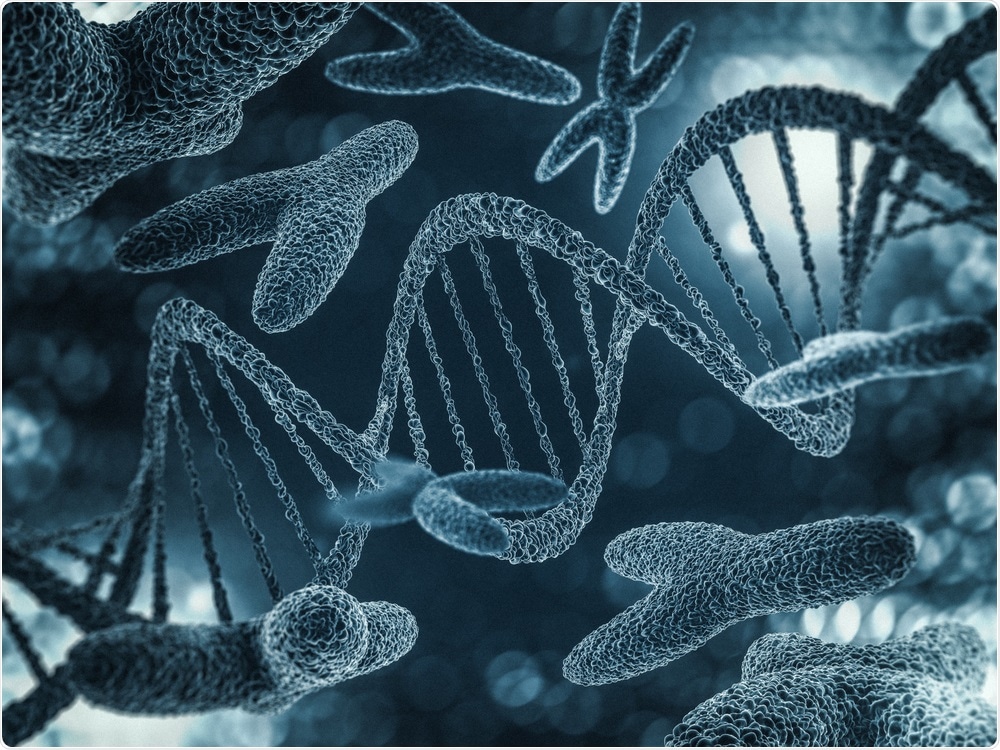Scientists in J. Keith Joung’s laboratory at the Massachusetts General Hospital have developed novel genome-editing technologies that could help understand disease-related genetic mutations based on C-to-G (cytosine to guanine) single base variations.

Image Credit: Double Brain/Shutterstock.com
The novel base editors have also been developed to reduce “off-target,” or unintended, mutations that could lead to unwanted side effects.
The latest CRISPR-guided DNA base editing technologies have been developed to efficiently induce “transversion” modification of DNA bases, while reducing the levels of undesirable “bystander” mutations.
A study published online in the Nature Biotechnology journal has described the proof-of-concept C-to-G base editor, known as CGBE1, as well as a smaller version, called miniCGBE1. Ibrahim C. Kurt and Ronghao Zhou are co-first authors of the study.
Clustered regularly interspaced short palindromic repeats, or CRISPR for short, is a gene-editing technology that was initially identified as a defense mechanism in bacteria and later harnessed by researchers as a tool for repairing and/or snipping out DNA sequences.
The initial CRISPR methods depended on producing and repairing breaks in the double-strand DNA.
Base editing is a new form of CRISPR gene editing that was developed by David Liu’s lab at Harvard University and the Broad Institute. It is not based on introducing a double-stranded break in DNA, but is rather focused on directly changing a single base in DNA.”
Julian Grünewald, MD, Study Co-corresponding Author, Molecular Pathology Unit, Massachusetts General Hospital
Dr Grünewald also works at Harvard Medical School (HMS).
Base editors are essentially fusion proteins that employ an altered form of CRISPR-Cas. This form is targeted to a particular target location with the aid of a guide RNA, where it subsequently deploys an enzyme, known as a deaminase, to alter a particular base to produce a required DNA change.
For instance, the method can be used to transform a cytosine (C) base to a thymine (T) base, both of which are bases within the pyrimidine class (carried out with a cytosine base editor or CBE). In a similar way, an adenine base editor, or ABE, can convert an adenine (A) to a guanine (G), both of which are purine bases.
CGBE1 exploits a variant of CBE that was published back in 2019 by J. Keith Joung, MD, PhD, and collaborators in the Nature journal. This previous CBE variant, known as SECURE-CBE, was demonstrated to induce C-to-T changes with strikingly fewer off-target RNA effects.
The novel CGBE1 tool integrates the deaminase from this SECURE-CBE variant, which along with other components allows the technically challenging exchange of bases from one group to another while still reducing the risk of undesirable modifications.
There are known disease-associated mutations or pathogenic mutations that could be fixed by this type of editing.”
Julian Grünewald, MD, Study Co-corresponding Author, Molecular Pathology Unit, Massachusetts General Hospital
But the actual number of disorders that could be corrected with CGBE1 or an analogous editing platform is still not clear.
We’re still at an early stage with this new class of transversion base editors; CGBE1 still requires additional optimization and it would be premature to say this is ready for the clinic. But we envision that CGBE1 could be useful for research applications, enabling the introduction of specific C-to-G mutations.”
Julian Grünewald, MD, Study Co-corresponding Author, Molecular Pathology Unit, Massachusetts General Hospital
Source:
Journal reference:
Kurt, I. C., et al. (2020) CRISPR C-to-G base editors for inducing targeted DNA transversions in human cells. Nature Biotechnology. doi.org/10.1038/s41587-020-0609-x.